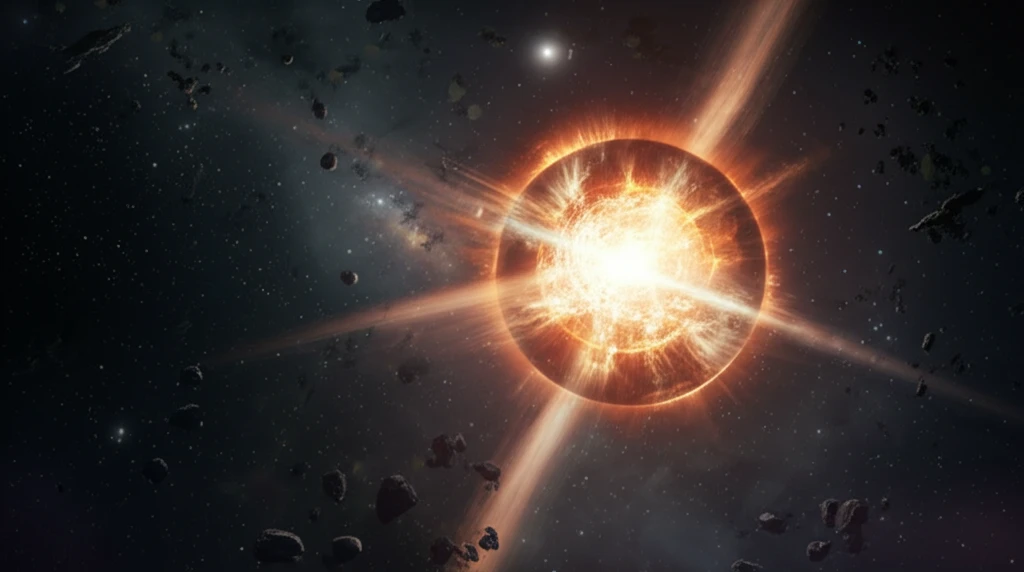
Decoding Gamma-Ray Bursts: How Stellar Explosions Reveal the Universe's Secrets
"Unraveling the Mystery of Gamma-Ray Bursts and Their Progenitors: A Comprehensive Guide"
Gamma-Ray Bursts (GRBs) are the most luminous explosions in the universe, fleeting yet immensely powerful events that release more energy in seconds than our Sun will in its entire lifetime. These bursts, initially detected by military satellites in the late 1960s, have since become a focal point of modern astrophysics, offering unique insights into the deaths of massive stars, the birth of black holes, and the structure of the cosmos.
The study of GRBs is challenging because they are transient, appearing randomly in the sky and fading quickly. When astronomers detect a GRB, the progenitor system has already been destroyed, making direct observation impossible. Therefore, scientists rely on indirect methods, piecing together clues from observational data, theoretical models, and logical reasoning to understand the nature of these enigmatic phenomena.
This article explores the fascinating world of GRBs, examining the various progenitor systems proposed to explain their origins. We'll delve into the observational constraints that any GRB model must satisfy, discuss the leading theories involving massive stars and compact objects, and consider alternative scenarios that might give rise to these bursts of cosmic energy. Understanding GRBs not only reveals the life cycles of stars but also provides a window into the fundamental physics governing our universe.
What Constraints Define a GRB Progenitor Model?

Any viable model for a GRB progenitor must account for several key observational constraints. These constraints act as a filter, eliminating theories that cannot adequately explain the observed characteristics of GRBs. The main challenges are:
- Energetics: Observations show that the collimation-corrected y-ray emission energy of GRBs is Ey ~ 10^51 erg (generally in the range of 10^49–10^52 erg). The GRB progenitor therefore must lead to a catastrophic event with an energy of this order.
- Variability time scale: The observed variability time scale St can be as short as milliseconds. The size of the central engine then has to be smaller than cdt ~ 3 × 10^7 cm. This points towards a stellar-size compact object (black hole or neutron/quark star) as the central engine. One requires that the progenitor leaves behind a compact object after the catastrophic event. Therefore, the progenitor system must be of stellar scale.
- Collimation: Various arguments suggest that GRBs are collimated. This requires that the progenitor system has the capability of launching a collimated jet.
Why Study GRBs?
Studying GRBs is vital for understanding the extreme physics that govern the universe. These bursts offer a unique probe into the life cycles of massive stars, the formation of black holes, and the processes that create heavy elements. By continuing to unravel the mysteries of GRBs, we gain deeper insights into the fundamental workings of the cosmos and our place within it.
